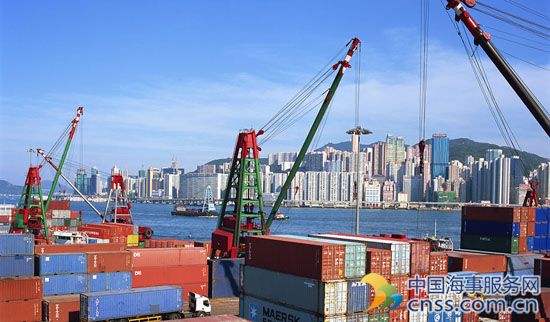Market share or higher prices? The Saudi, Russia oil dilemma: Russell

Saudi Arabia and Russia are likely to discover that when pursuing two incompatible goals, the one deemed less important will ultimately be sacrificed.
The world’s top two oil exporters appear to be chasing both higher crude prices through their curbs to production and market share by increasing exports, at least in Asia, the world’s biggest crude importing region and the fastest growing.
The question is which of these two goals will ultimately be abandoned in favour of the other, and how long will it take for Saudi Arabia and Russia to realise the incompatibility of their dual ambitions?
The crude import data from Asia’s biggest buyers show the scale of the challenge facing Saudi Arabia and Russia, the two countries that are the lynchpins of the November agreement between the Organization of the Petroleum Exporting Countries (OPEC) and its allies to cut output by 1.8 million barrels per day (bpd) in the first six months of 2017.
That agreement, which provided an initial boost to crude prices, may be extended for another six months after ministers from OPEC and non-OPEC producers agreed on March 26 agreed to conduct a review.
While OPEC and its allies have had success in ensuring high compliance with the deal, which has started the process of drawing down high global oil inventories, they have also opened the door to producers outside the agreement to raise output.
Chinese customs data for the month of February highlight how at risk OPEC and its allies are from cutting their own output while their rivals are free to pump as much as they want.
China imported 4.77 million tonnes, or about 1.24 million bpd, from top supplier Saudi Arabia in February, down almost 13 percent from the same month a year earlier.
While February’s imports were down from the same month in 2016, they were actually up from the 1.18 million bpd China imported from the kingdom in January, which shows that the Saudis seem reluctant to restrict sales to their top customer.
That’s strike one against boosting prices in favour of preserving market share.
China imported 1.19 million bpd from Russia in February, up 4.5 percent on the same month last year and also above the 1.08 million bpd recorded in January.
So far, that looks like strike two against cutting supplies to increase prices over preserving market share.
To be sure, there were countries that agreed to the cuts that did reduce their exports to China in February, such as the United Arab Emirates, but this was more the exception than the rule.
China’s imports from Saudi Arabia are 1 percent higher in the first two months of 2017 from the same period last year, while those from Russia are up 18.9 percent higher, from Angola 5.1 percent, Iraq 26.2 percent, Iran 9.4 percent and Venezuela 39.6 percent.
These figures don’t really speak of a concerted effort to restrict supplies to China, which has overtaken the United States to be the world’s largest importer of crude.
BRAZIL GAINS MARKET SHARE
It will also be disturbing for OPEC and its allies to look at the 64.8 percent surge in China’s imports from Brazil in the first two months of this year to 392,000 bpd, and even from Britain, with a 380 percent leap to 126,000 bpd.
Sure, these are small numbers in the context of China’s imports of 8.14 million bpd in the first two months, but it does show the Chinese are willing and able to tap other suppliers if they feel any pinch from OPEC and its allies cutting production.
It’s a somewhat similar story in India, Asia’s number two oil importer.
India’s imports of crude oil from Brazil jumped 176.2 percent in the first two months of the year to 139,300 bpd, according to vessel-tracking and port data compiled by Thomson Reuters Supply Chain and Commodity Forecasts.
It was more of a mixed picture from exporters party to the November agreement, with India’s imports from Saudi Arabia down by 15.2 percent to 789,900 bpd in the first two months, while Iraq saw a drop of 37.5 percent and Kuwait 27.3 percent.
But India’s purchases from Iran were up 211 percent, from the UAE by 19.7 percent and Azerbaijan by 220 percent.
What the crude import numbers from China and India for the first two months show is that by and large the top producers seem reluctant to cut supplies to major Asian buyers, and that even if they do, other producers seem willing to step into the breach.
It’s the ability of producers outside the agreement to fill any supply gap that’s the potential strike three against cutting output to boost prices.
The United States exported around 950,000 to 1 million bpd in February, according to participants in the industry who spoke at an Argus crude oil forum in Singapore on Tuesday.
The participants, some of whom represented U.S. oil producers, expect that this level of exports can be sustained, and will increase in coming years as shale producers, particularly those in the Permian basin ramp up output, given they can be profitable at prices as low as $40 a barrel.
The U.S. shale industry is still the Sword of Damocles hanging over the head of OPEC and its allies.
While their agreement to curb output may have some impact insofar as drawing down excess inventories, perhaps it would be better for Saudi Arabia, Russia and the others to hope for stronger world economic growth to spark a demand-led rebalancing.
Source: Reuters (Editing by Christian Schmollinger)
HEADLINES
- Do shipping markets want Biden or Trump for the win?
- All 18 crew safe after fire on Japanese-owned tanker off Singapore
- Singapore launching $44m co-investment initiative for maritime tech start-ups
- Cosco debuts Global Shipping Industry Chain Cooperation Initiative
- US warns of more shipping sanctions
- China continues seaport consolidation as Dalian offer goes unconditional